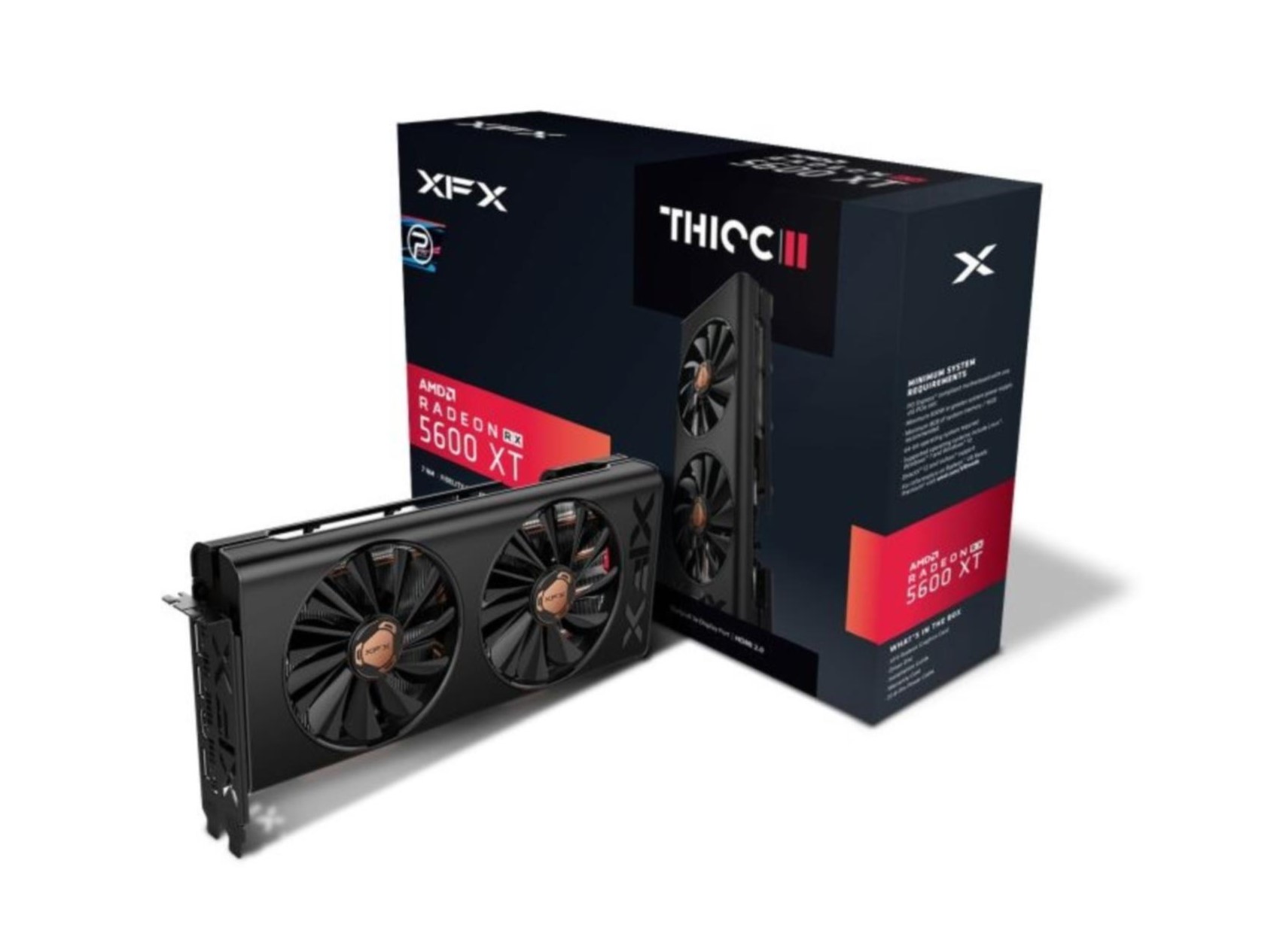Highly anticipated: Squeezing in between the RX 5700 and RX 5500 XT is the new Radeon RX 5600 XT, a graphics card set to compete at the $300-ish price point. With leaks pinning it as having the same core count as the RX 5700 and clocks only 15% lower, it should be just as good value as its bigger brother.

AMD’s RX 5600 XT GPU has been detailed so thoroughly, it’s more appropriate to call it a flood than a leak. Asrock accidentally published a product page for the RX 5600 XT Challenger D 6GB OC, and XFX, not wanting to miss out, also accidentally published a product page for their RX 5600 XT Thicc II Pro Staging (a terrible name if ever there was one).
Videocardz has spilled the beans on Asrock's RX 5600 XT Phantom Gaming D3 and MSI’s two cheaper variants, the RX 5600 XT Mech OC and RX 5600 XT Mech. As MSI’s non-OC Mech models always reflect AMD’s stock clocks, we’ve used its specs as a substitute in the table below.
| Model | Cores | Base Clock | Game Clock | Boost Clock | Memory | Bandwidth | MSRP |
| RX 5700 XT | 2560 | 1605 MHz | 1755 MHz | 1905 MHz | 8GB | 448 GB/s | $399 |
| RX 5700 | 2304 | 1465 MHz | 1625 MHz | 1725 MHz | 8GB | 448 GB/s | $349 |
| RX 5600 XT | 2304 | 1130 MHz | 1375 MHz | 1560 MHz | 6GB | 288 GB/s | ~$299 |
| RX 5500 XT | 1408 | 1607 MHz | 1717 MHz | 1845 MHz | 8GB or 4GB | 224 GB/s | $169 |
Pricing information hasn’t made its way onto any accidentally published product pages, unfortunately. However, sources indicate that AMD is targeting the $299 price point, while board partners are pushing for $279. With 5700 models easily found at $320, lower is better.
| RX 5600 XT Model | Base Clock | Game Clock | Boost Clock |
| Asrock Phantom | 1355 MHz | 1560 MHz | 1620 MHz |
| Asrock Challenger | 1235 MHz | 1460 MHz | 1620 MHz |
| XFX Thicc | ? | 1460 MHz | 1620 MHz |
| MSI Mech OC | 1185 MHz | 1420 MHz | 1600 MHz |
| MSI Mech | 1130 MHz | 1375 MHz | 1560 MHz |
Architectural differences between the 5600 XT and 5700 appear to be borderline negligible.
Based on the same die and having the same core count, the main physical differences are the shrinking of the memory to 6GB and the memory bus to 192-bit, which has reduced memory bandwidth to 288 GB/s. That means that you should be able to overclock the card to RX 5700 speeds and see similar performance if you’re not too aggressive with resolution or texture quality.
XFX lists the 5600 XT’s release date as January 2020. It’s likely to be unveiled during AMD’s CES 2020 presentation on Monday.
https://www.techspot.com/news/83399-amd-radeon-rx-5600-xt-models-asrock-msi.html